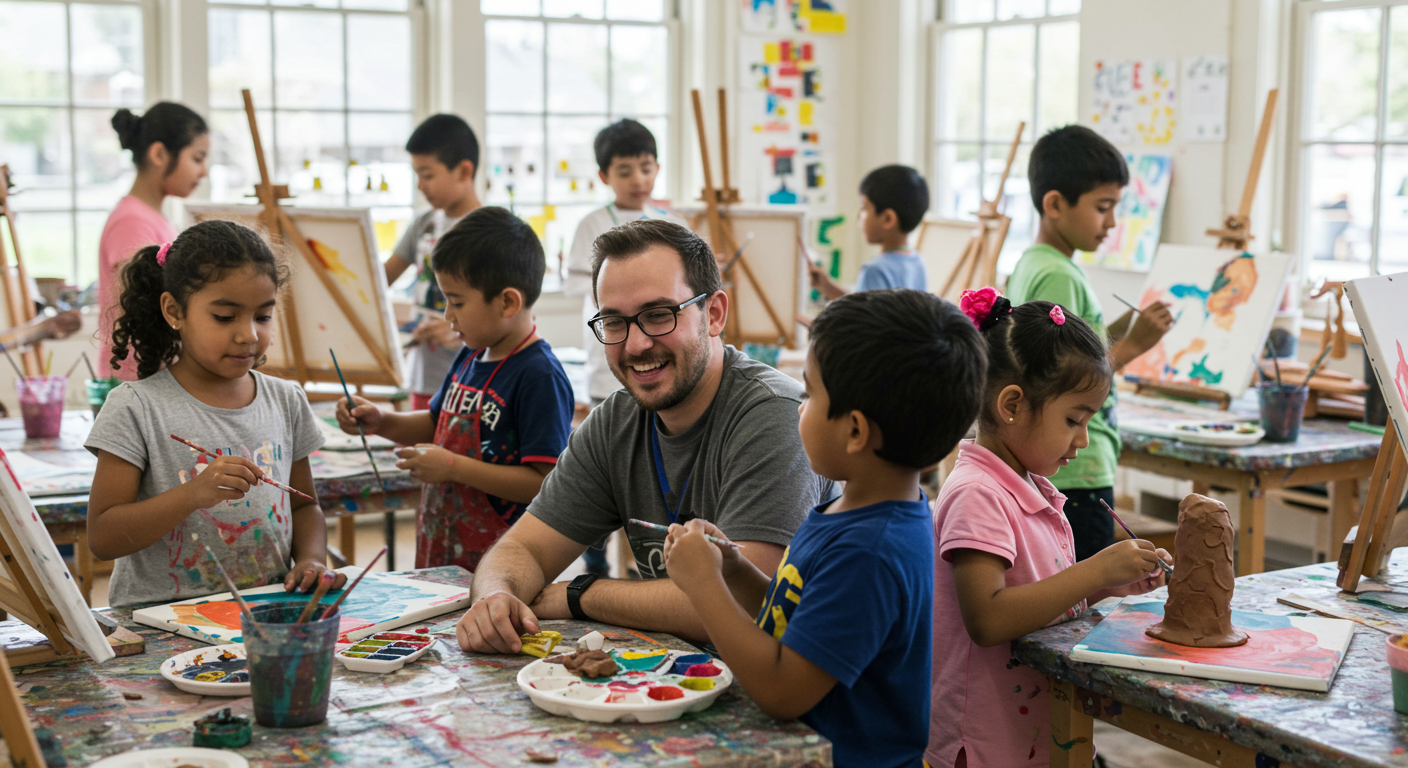
In today’s fast-paced world, nurturing creativity and focus in children has become more essential than ever. A structured kids art program serves as a powerful tool to achieve this. By engaging in various artistic activities, children express themselves and develop critical cognitive and emotional skills. Through art, they learn to concentrate and think outside the box, laying a solid foundation for their overall development. This exploration of creativity through art creates an enriching environment where children can thrive.
The Role of Art in Child Development
Art foundations lay a critical base for children, fostering holistic development. Engaging in artistic activities cultivates essential skills beyond creativity, including problem-solving, decision-making, and emotional intelligence.
Creative Expression Through Various Mediums
Each brushstroke or pencil line on paper represents an emotional journey, enabling kids to articulate their thoughts and feelings when words can sometimes fall short. From painting to drawing, and sculpting to collages, diverse mediums offer children opportunities to unleash their imagination and personal flair.
Boosting Problem-Solving Abilities
Art encourages children to tackle challenges head-on. When creating, they must decide which colors to use, how to structure their work, and what materials to incorporate. These decision-making moments enhance their cognitive flexibility and foster innovative solutions.
Fostering Enhanced Focus
In a world brimming with distractions, developing the ability to concentrate is invaluable. Art programs empower children to immerse themselves fully in their projects, establishing a sense of focus that transcends the canvas.
Learning Through Artistic Engagement
When kids engage in art, they often experience the phenomenon known as “flow,” a state in which they lose track of time and are fully absorbed in the task at hand. This not only helps improve attention span but also enhances their ability to concentrate on future endeavors.
The Connection Between Art and Academic Success
Several studies indicate that children who participate in regular art activities demonstrate improved performance in core subjects, such as math and language. The integration of art in education stimulates critical areas of the brain responsible for complex thought processes. When children learn about composition and color theory, they develop skills that can be applied in academic settings.
The Emotional and Social Benefits of Art Programs
Art does more than just enhance creativity and concentration; it also fosters socialization and emotional understanding among peers. A kid’s art program typically serves as a melting pot for children to collaborate and share their unique perspectives.
Building Emotional Intelligence
Artistic expression offers children an outlet for their emotions. By interpreting colors and themes, they gain invaluable insights into their feelings and those of others, nurturing their emotional intelligence. For example, children can learn to convey feelings of joy, sadness, or frustration through imagery, bridging communication gaps.
Promoting Teamwork and Collaboration
Group projects within art programs encourage children to work collaboratively, developing mutual respect for each other’s ideas and perspectives. This promotes healthy social interactions, teaching youngsters the importance of teamwork and compromising for the greater good.
Practical Approaches to Integrating Art at Home
Parents can extend the benefits of art programs beyond the classroom. Here are some practical tips to encourage artistic expression at home:
- Provide Art Supplies: Ensure accessibility to a variety of materials like colored pencils, paints, and craft paper.
- Encourage Experimentation: Motivate kids to explore different techniques without the fear of making mistakes.
- Celebrate Creativity: Appreciate their efforts instead of focusing solely on the final product.
- Engage in Art Together: Share the experience by working on art projects as a family, forging connections while boosting creativity.
The Community’s Role in Supporting Young Artists
Art is not only a personal journey but a communal experience. Community involvement can amplify the impact of kids’ art programs through:
- Workshops and Events: Hosting events where children can showcase their work enhances motivation and builds confidence.
- Art Clubs and Classes: Local organizations often provide various programs that expose young artists to expert guidance.
- Art in Public Spaces: Engaging kids in projects that beautify local areas instills pride and a sense of belonging.
Ultimately, the integration of a robust kids art program can pave the way for children to thrive creatively and academically. By investing in the arts, we nurture future leaders who are not only innovatively inclined, but are also well-rounded individuals with a profound capacity for emotional understanding. If you’re seeking to enrich your child’s artistic journey, consider exploring the offerings by The Biltmore School, where creativity meets inspiration.
